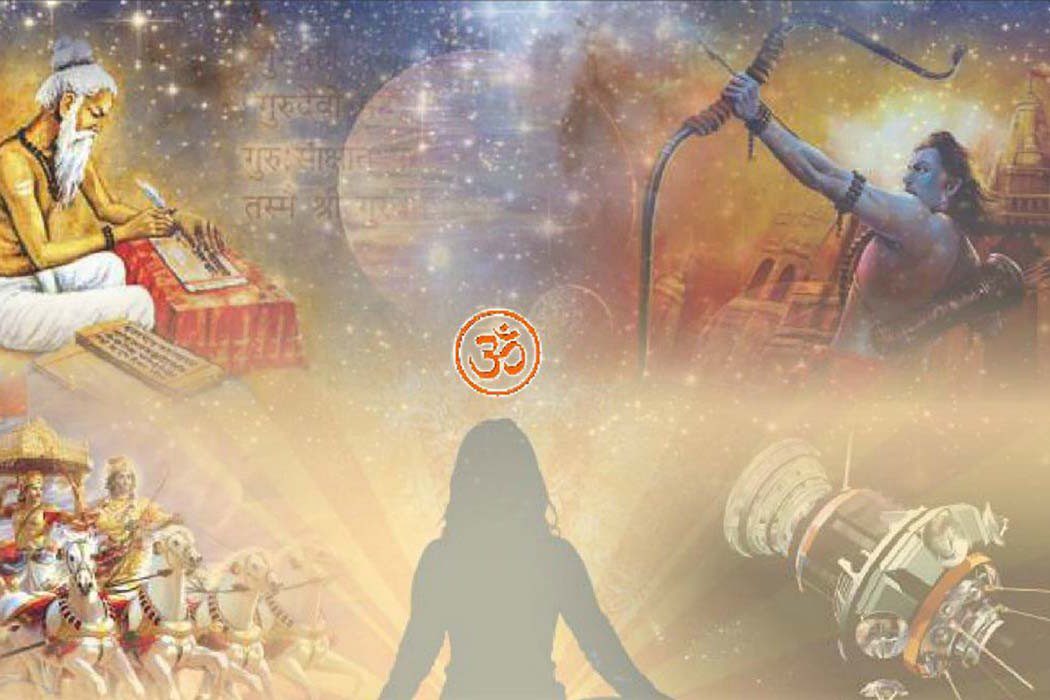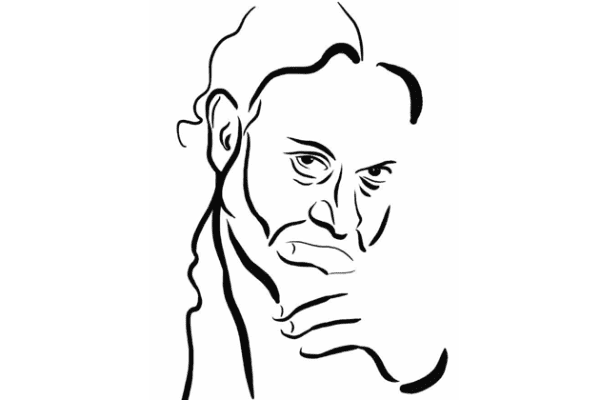Whether it is the virile fantasies of the chaddi nincompoops in power or the platitudes of unity in diversity dispensed by our savarna intellectuals, the idea of India lies in the eyes (and politics) of the beholder.

EH Carr puts it so well in his seminal work What is History?:
It used to be said that facts speak for themselves. This is, of course, untrue. The facts speak only when the historian calls on them: it is he who decides to which facts to give the floor, and in what order or context. It was, I think, one of Pirandello’s characters who said that a fact is like a sack—it won’t stand up till you’ve put something in it . . . The historian is necessarily selective. The belief in the hard core of historical facts existing objectively and independently of the interpretation of the historian is a preposterous fallacy, but one which it is very hard to eradicate.
Therefore, the old adage “Is hamam mein sab nange hain” aptly explains the nature of history writing. As much as one wishes otherwise, everyone is naked in the bath of historiography.
The old adage “Is hamam mein sab nange hain” aptly explains the nature of history writing. As much as one wishes otherwise, everyone is naked in the bath of historiography.
Having said that, the caveat that I think should always be adhered to is that people like Y Sudershan Rao and Dinanath Batra should not be allowed to venture inside in any case, because it is one thing to be reasonably naked and it is altogether a different thing to be shamelessly and recklessly so. These gentlemen do not want to write history, but want to spread a load of malarkey and poppycock.
Given the way that team Modi is building a gang of chaddi nincompoops to expedite its cultural project, it seems they will succeed to some extent in at least rendering few impressionistic minds pathetically garbled and wired. If they do succeed in achieving such a feat, then the current chairperson of the Indian Council for Historical Research must be conferred with at least a Bharat Ratna, if not the Nobel Prize. He is an ideal bhakt who religiously attend the “national workshop of the Mythic Society in connection with their project on ‘Re-Writing the History of our Glorious Nation’”. Wallah! The British colonial historians must be turning in their graves!
The serious contender to the ICHR head is his fellow bhakt—Minister of Culture Mahesh Sharma, who thinks that only those Indian Muslims who can make ballistic missiles for nuclear warheads are real nationalists. Just a few weeks ago, he threw open an exhibition at Rabindra Bhavan, titled “Cultural Continuity from Rig Veda to Robotics”. A pamphlet circulated at the exhibition by its organisers, the Institute of Scientific Research on Vedas (I-SERVE), demonstrated that the present dispensation at New Delhi not only has knack for throwing election jumlas but pose some serious pathological challenges like fascistic-neurosis. Their objective, they clearly stated in their publication, is to “provide a solid foundation to the new idea of rewriting the history of the world on purely scientific basis”. Then, one should not be surprised if tomorrow, these history ninjas claim that Mark Zuckerberg or even Google is the 9.5th avatar of Vishnu!
Of course, India is what its corporate media and intellectuals tell us it is. At the stroke of the midnight on 15 August 1947 Nehru claimed that India had rediscovered itself (although the likes of Benedict Anderson and Eric Hobsbawm would have laughed their asses off at such primordialist naïveté, because every nation-state is, ultimately, a “construct”). Amartya Sen believes that an Indian is virtuously argumentative (and still in his books one finds arguments over disputed Kashmir confined to footnotes only).
Ramachandra Guha believes that Nehru created a “liberal, humanist credo” and that the Indian democracy accommodates diversities (and yet he fails to see the Indian state, even under Nehru, suppressing and disappearing dissenters in many places without much opposition from India’s public intellectuals, including himself; he should read Perry Anderson’s essay ‘After Nehru’ in the London Review of Books). Ananya Vajpyei thinks it is a “Righteous Republic” (and is outraged at Arundhati Roy for despoiling the righteous image of Gandhi in her preface to Annihilation of Caste) and yet, NDTV and Zee and other mainstream channels regularly produce and disseminate “unity in diversity” lollypops for mass consumption (read manufacturing consent).
All these savarna intellectuals and networks diligently work on the grand national project called ‘Aisa Desh Hai Mera’, à la Yash Chopra, without ever telling their audiences that for much of the populations who are at the receiving end of the bourgeoisie dominance and the margins of the Indian State, all this talk is bunkum, outrageous, and serves no other purpose but the further entrenchment of the ruling classes (or castes?).
All these savarna intellectuals and networks diligently work on the grand national project called ‘Aisa Desh Hai Mera’ without ever telling their audiences that for much of the populations who are at the receiving end of the bourgeoisie dominance and the margins of the Indian State, all this talk is bunkum, outrageous, and serves no other purpose but the further entrenchment of the ruling classes.
Therefore, it is better to select those facts that highlight those dingy and grey areas of politic-space which often escape the filtering lenses of the pseudo-liberal savarna intellectuals, who dominate the Indian mainstream media, and it is equally good to upset the bulging stomachs of the self-righteous bhakts because they are pathetically intolerant to those foods which provoke alternative humanistic thoughts.
As the cliché goes, Modi is the poster boy of Hindutva, a doctrine of right-wing nationalism or a distant cousin of European fascism. Generally an adherent of this doctrine is a neurotic person who is obsessed with one and only one entity: Muslims. From Abdali to Aurangzeb to Jinnah to Owaisi (and occasionally Geelani), a Hindutva nationalist only sees a spectre of Muslims hovering over its head. For a Hindutva nationalist, Mussalmaan is the source of all ills that beset India and the Hindu society because it was the Muslims who robbed India’s glory through successive invasions in the past and the partition of 1947. So, in order to regain that lost glory and pride, bhakts want to turn the clock back to a utopian Vedic era of interstellar cars, televisions, plastic surgery and rid India of the foreign influences that have crept into its body-politic.
As such, Modi has unleashed his grand political project, which in the words of Stuart Hall can be called “regressive modernization”. It is regressive for it is obsessively nostalgic about the Gupta empire (supposedly “the Golden Age”), and it is modernising because it wants Chandragupta to grab a coffee with Zuckerberg at Silicon Valley, or at least let Apple manufacture a few parts for the iPhone in India or, to give a Marxist turn to it, install mega engines of global capitalism on lands stolen from poor farmers.
According to Antonio Gramsci, an organic crisis “consists precisely in the fact that the old is dying and the new cannot be born; in this interregnum a great variety of morbid symptoms appear.” Exactly at such an interregnum, “a man of destiny” appears on the scene and presents himself as the solution to all ills.
According to Antonio Gramsci, an organic crisis “consists precisely in the fact that the old is dying and the new cannot be born; in this interregnum a great variety of morbid symptoms appear.” Exactly at such an interregnum, “a man of destiny” appears on the scene and presents himself as the solution to all ills; though, his solution is not any well-formulated rational program but the sheer power of his 56-inch chest. This man of destiny is readily hailed by frustrated elites. The party of the savarna castes, on whose behest he works, hires a costly PR agency for his makeover; they trim his graying beard, puts on impeccable ethnic suits and make him wear Gucci specs and a shimmering Swiss watch. This makes him look far better than a modern-day Nero! At public rallies and foreign tours he throws jumla after jumla and his acolytes in the media provide him much space to build his image and let him spread his capitalist propaganda. And ironically, he launches the Digital India initiative in San Francisco by imposing an 80-hour Internet ban in India-controlled Kashmir first!















Chayanika Saxena
Just the right kind of blend of academics and the contemporary politics in India. It was enlightening to read your article on the new ‘bhakti movement’ that seems to have gripped India.